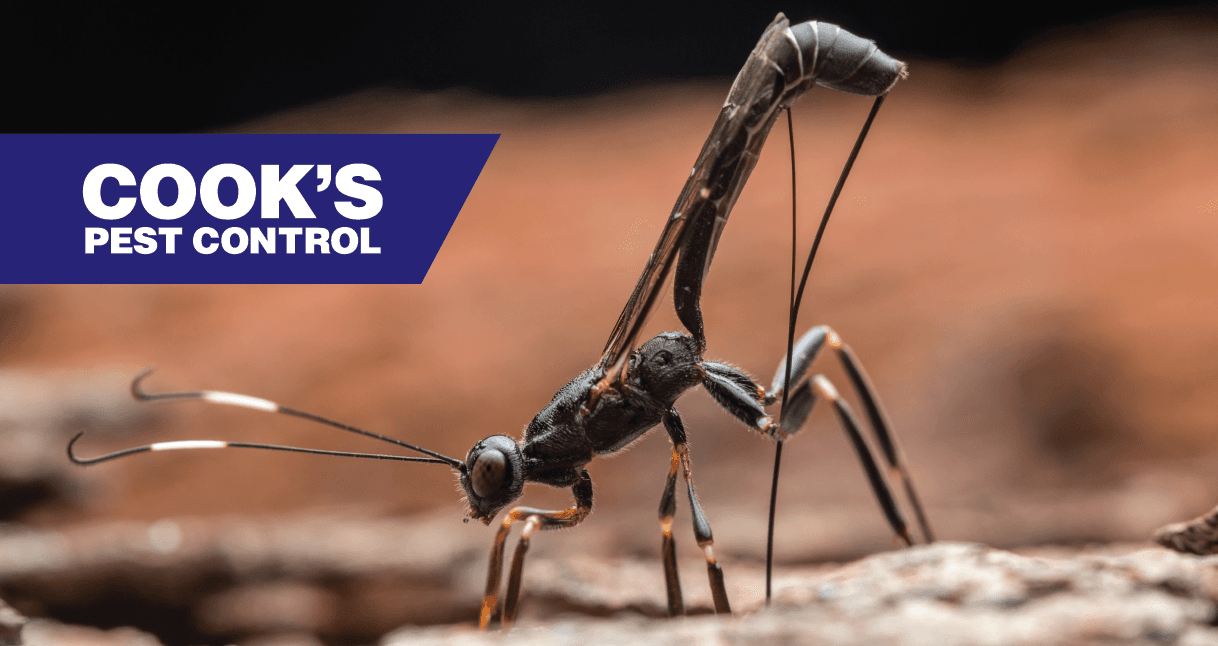Parasitic Wasps

When we think of wasps, we often think of them in a negative light. We may imagine them invading our homes and stinging us or think of the painful reactions their stings may cause. Despite these negative associations, not all wasps are bothersome; some wasps known as parasitoid wasps are often beneficial, especially in pest control.
Pest control is so much more than the physical act of treating for insects and other pests. In the pest control world, we often practice Integrated Pest Management, or IPM for short. IPM is the practice of looking at a pest problem as a whole and using several different methods to help control a pest before jumping straight to treating it with a product. One of these methods is biological control or the practice of controlling pests using other organisms. Different means of biological control include predation, parasitism, herbivory as well as other natural mechanisms. For our purposes, we will focus on parasitism, especially as it relates to parasitoid wasps.
The Parasitic Wasps: Varied and Vibrant
Wasps belong to the order Hymenoptera, which includes more parasitoids than any other order of insect with about 40 different families among them. Parasitoid wasps vary in their size and color. Some can be as small as a flake of pepper while others can grow to be as large as 3” long. Their color ranges from dark to very bright and patterned.
What do parasitoid wasps feed on? Adults of these species are similar to other wasps and feed on nectar, pollen, and, in some cases, other insects. However, immatures have a different food source. Often these wasps will lay their eggs within a host such as aphids, caterpillars, flies, beetles, etc. The insects in which they lay their eggs ultimately become a food source for the wasps. Consequently, the host insect will eventually die. This is why we refer to these wasps as parasitic; a parasite is defined as an organism that lives in or on an organism of another species (its host) and benefits by deriving nutrients at the other’s expense. This is exactly what these wasps do. They ultimately kill their host because the young are feeding internally on the host, which, when they become large enough, will kill the host.
So what are some examples of these different kinds of wasps? One major example of a parasitoid wasp is Diachasmimorpha longicaudata, a wasp that lays its eggs in the Caribbean fruit fly. The Caribbean fruit fly is an invasive pest that was accidentally introduced into South Florida and has been a major pest of over 80 different species of fruit. Most notably for the Florida fruit industry, it is a major pest of citrus. The introduction of this parasitoid wasp reduced to the Caribbean fruit fly population in that region by 40%. Parasitic wasps have also proved helpful in controlling a variety of other crop pests such as cutworms, tomato hornworms, cabbage loopers, aphids, whiteflies, and many others.
What about other types of pests that don’t affect crops, such as cockroaches? No matter how hard we try to keep them out, we may come across a roach that has found its way into our home. Some cockroaches may be sneaky and work their way inside, but there are wasps that can parasitize these cockroaches. One of these wasps is the Ensign Wasp (Evania appendigaster). The ensign wasp is one of the larger parasitic wasps and is all black in color with long legs and distinct body shape; their abdominal petiole is attached near the top of the thorax and is laterally compressed. This wasp does not actually parasitize the adult stage of its host like most species of parasitoid wasps; instead, they will parasitize the egg case (ootheca) of household cockroaches. Upon finding an egg case, the wasp will begin vibrating its antennae and then will lay her eggs on the long axis of the egg case. It takes her a good deal of hard work to be able to penetrate the tough integument of the egg case with her ovipositor, taking anywhere from 15-30 minutes. They are able to destroy an entire egg case with a single egg.
Although parasitoid wasps may be a death sentence for unwanted pests, they will not sting people, so rest assured that they are working for you, not against you.
Kristen Stevens, BCE
